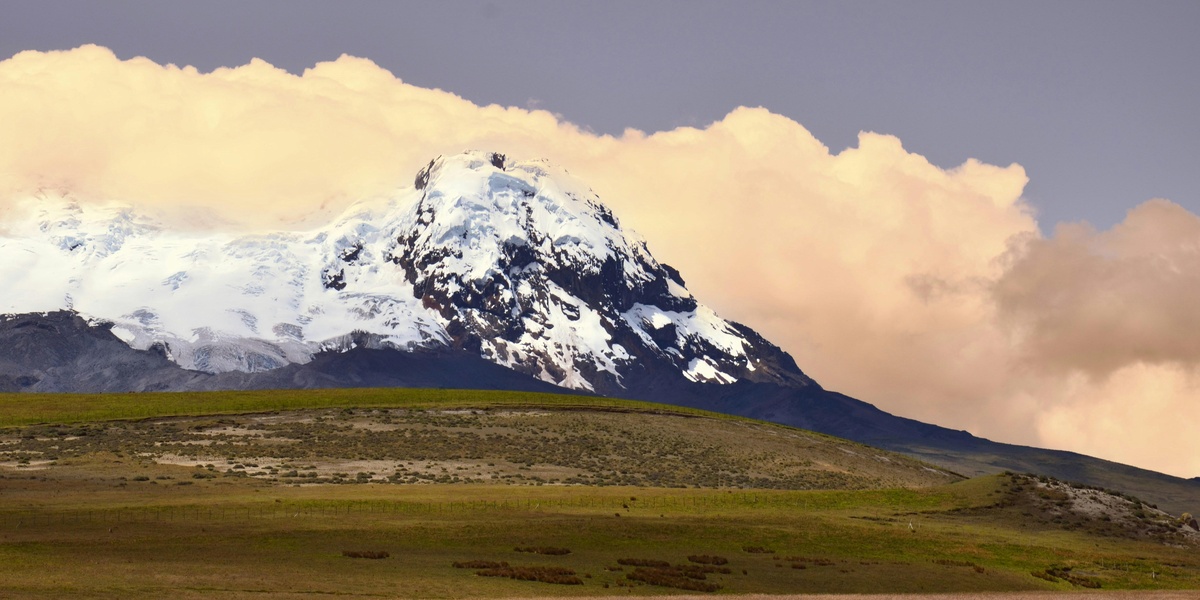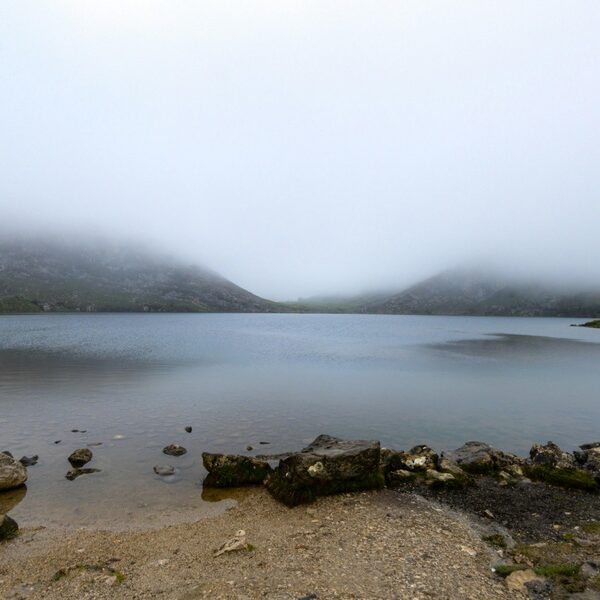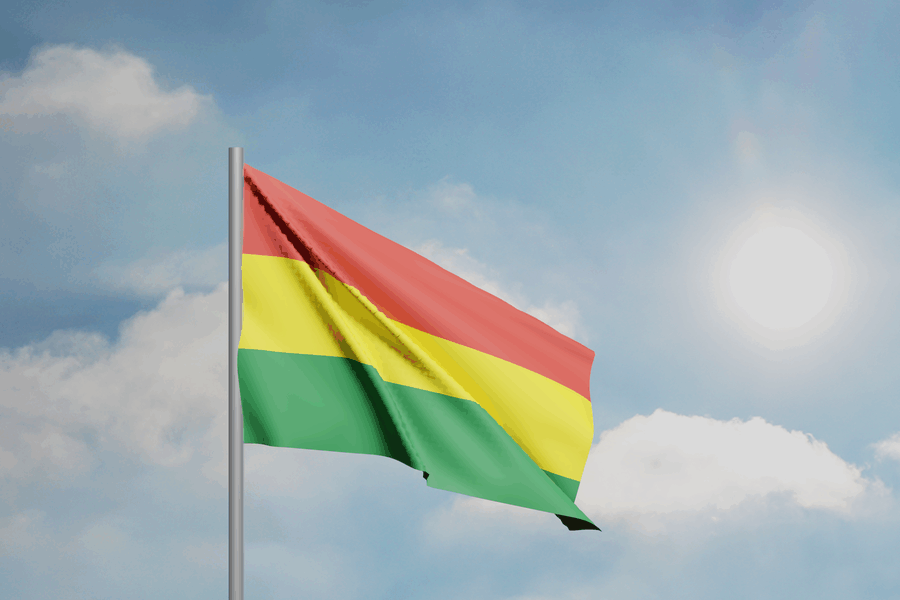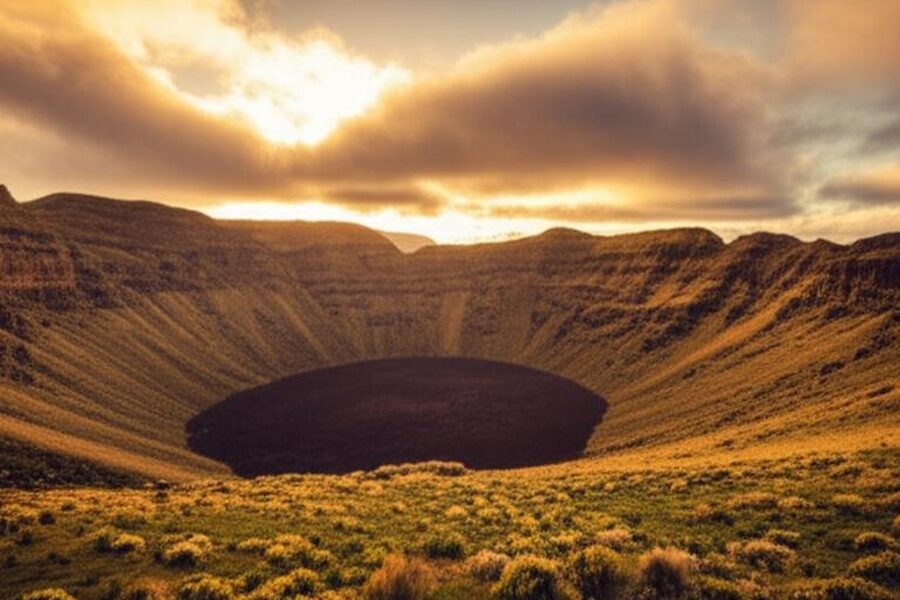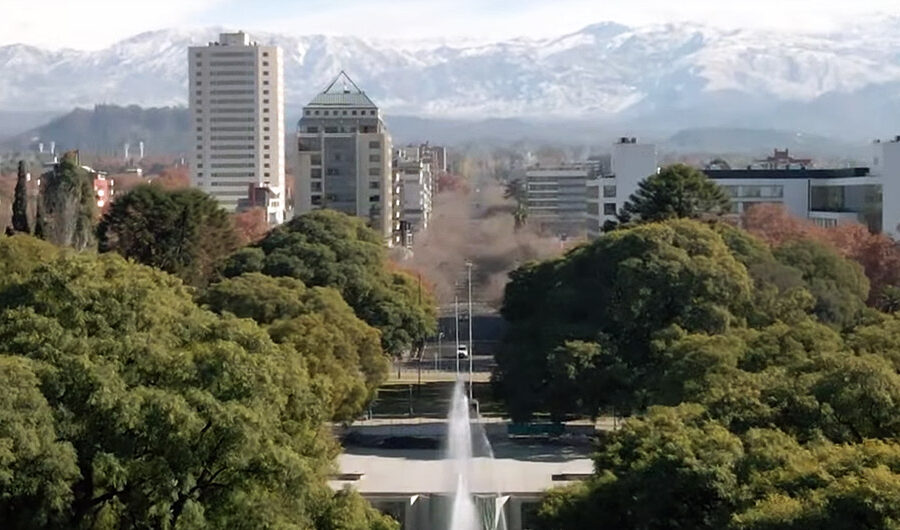The Andes Mountains are a colossal chain, stretching across South America and home to some of the world’s most dramatic landscapes. Beneath their majestic peaks, immense geological forces are constantly at work, giving rise to a breathtaking array of volcanic activity that shapes the continent’s topography and history.
This dynamic environment means that understanding these powerful natural wonders is crucial. Here, we present a comprehensive list of 75 Active volcanoes in the Andes, ranging geographically from Acamarachi in the north to Yate in the south. For each entry, you’ll find key details including its Country, Elevation (m), and Last Eruption, all organized for easy reference in the comprehensive list you’ll find below.
What makes a volcano “active”?
A volcano is generally considered “active” if it has erupted in historical times (usually within the last 10,000 years) or shows signs of ongoing unrest, such as seismic activity, gas emissions, or ground deformation. While some active volcanoes might be currently dormant, meaning they are not erupting but could erupt again, others are in a constant state of low-level activity or periodic eruption.
Active Volcanoes in the Andes
| Volcano Name | Country | Elevation (m) | Last Eruption |
|---|---|---|---|
| Nevado del Ruiz | Colombia | 5,321 | 2023 |
| Galeras | Colombia | 4,276 | 2010 |
| Nevado del Huila | Colombia | 5,364 | 2012 |
| Puracé | Colombia | 4,650 | 1977 |
| Cerro Machín | Colombia | 2,750 | Holocene |
| Chiles-Cerro Negro | Colombia/Ecuador | 4,723 | 2014 |
| Cotopaxi | Ecuador | 5,897 | 2023 |
| Sangay | Ecuador | 5,230 | 2024 |
| Reventador | Ecuador | 3,562 | 2024 |
| Tungurahua | Ecuador | 5,023 | 2016 |
| Pichincha | Ecuador | 4,784 | 2002 |
| Quilotoa | Ecuador | 3,914 | 1280 |
| Cayambe | Ecuador | 5,790 | 1786 |
| Antisana | Ecuador | 5,758 | 1802 |
| Ubinas | Peru | 5,672 | 2023 |
| Sabancaya | Peru | 5,976 | 2024 |
| Misti | Peru | 5,822 | 1985 |
| Huaynaputina | Peru | 4,850 | 1600 |
| Ticsani | Peru | 5,408 | 1800 |
| Tutupaca | Peru | 5,815 | 1902 |
| Coropuna | Peru | 6,377 | Holocene |
| Ojos del Salado | Chile/Argentina | 6,893 | 1993 |
| Llullaillaco | Chile/Argentina | 6,739 | 1877 |
| Lascar | Chile | 5,592 | 2023 |
| Villarrica | Chile | 2,847 | 2024 |
| Llaima | Chile | 3,125 | 2009 |
| Puyehue-Cordón Caulle | Chile | 2,236 | 2012 |
| Calbuco | Chile | 2,003 | 2015 |
| Chaitén | Chile | 1,122 | 2013 |
| Hudson | Chile | 1,905 | 2011 |
| Nevados de Chillán | Chile | 3,212 | 2024 |
| Copahue | Chile/Argentina | 2,997 | 2021 |
| Planchón-Peteroa | Chile/Argentina | 4,107 | 2019 |
| Guallatiri | Chile | 6,071 | 1960 |
| Parinacota | Chile/Bolivia | 6,348 | 290 |
| Ollagüe | Chile/Bolivia | 5,868 | Holocene |
| San Pedro | Chile | 6,145 | 1960 |
| Tupungatito | Chile/Argentina | 5,640 | 1987 |
| San José | Chile/Argentina | 5,856 | 1960 |
| Lonquimay | Chile | 2,865 | 1990 |
| Cerro Azul | Chile | 3,788 | 1967 |
| Antuco | Chile | 2,979 | 1869 |
| Sollipulli | Chile | 2,282 | 1240 |
| Lautaro | Chile | 3,623 | 1979 |
| Viedma | Chile/Argentina | 1,500 | 1988 |
| Burney | Chile | 1,758 | 1910 |
| Irruputuncu | Chile/Bolivia | 5,163 | 1995 |
| Licancabur | Chile/Bolivia | 5,916 | Holocene |
| Putana | Chile | 5,890 | 1810 |
| Sairecabur | Chile/Bolivia | 5,971 | Holocene |
| Socompa | Chile/Argentina | 6,051 | 5250 BC |
| Acamarachi | Chile | 6,046 | Holocene |
| Mocho-Choshuenco | Chile | 2,422 | 1864 |
| Antillanca-Casablanca | Chile | 1,990 | Holocene |
| Corcovado | Chile | 2,300 | 1835 |
| Melimoyu | Chile | 2,400 | 200 AD |
| Mentolat | Chile | 1,660 | Holocene |
| Maipo | Chile/Argentina | 5,264 | 1912 |
| Yate | Chile | 2,187 | Holocene |
| Hornopirén | Chile | 1,572 | Holocene |
| Apagado | Chile | 1,210 | Holocene |
| Taapaca | Chile | 5,860 | 320 BC |
| Uturuncu | Bolivia | 6,008 | Holocene |
| Cabaray | Bolivia | 5,869 | Holocene |
| Isluga | Chile | 5,550 | 1913 |
| Olca-Paruma | Chile/Bolivia | 5,407 | 1867 |
| Lastarria | Chile/Argentina | 5,697 | Holocene |
| Incahuasi | Chile/Argentina | 6,621 | Holocene |
| Aracar | Argentina | 6,095 | 1993 |
| Domuyo | Argentina | 4,709 | Holocene |
| Tromen | Argentina | 3,978 | 1822 |
| Copahue | Chile/Argentina | 2,997 | 2021 |
| Falso Azufre | Chile/Argentina | 5,890 | Holocene |
| Pocoques | Bolivia | 5,162 | Holocene |
| Quetena | Bolivia | 5,730 | Holocene |
Images and Descriptions
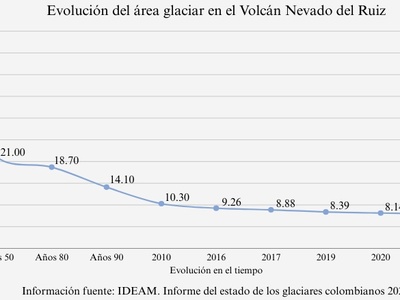
Nevado del Ruiz
Infamous for its deadly 1985 eruption, whose lahars (mudflows) buried the town of Armero. It remains one of Colombia’s most active and hazardous volcanoes, frequently showing signs of unrest and emitting ash.
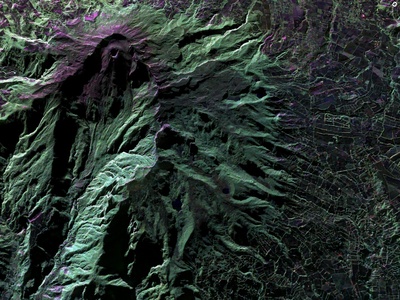
Galeras
Overlooking the city of Pasto, Galeras is one of South America’s most consistently active volcanoes. Its frequent, often unpredictable eruptions pose a significant and direct threat to the large nearby population.
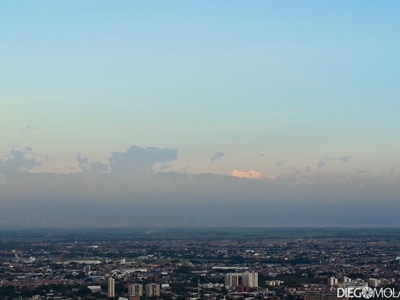
Nevado del Huila
As Colombia’s highest active volcano, this ice-capped giant’s eruptions can trigger dangerous mudflows by melting its summit glacier, threatening downstream communities along the Páez and Símbola rivers.
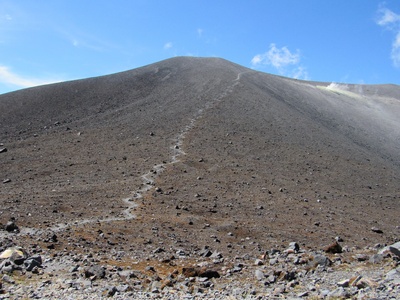
Puracé
Located in a national park famous for its unique páramo ecosystem, Puracé is one of Colombia’s most active volcanoes. It is known for its persistent gas emissions and occasional small ash eruptions.
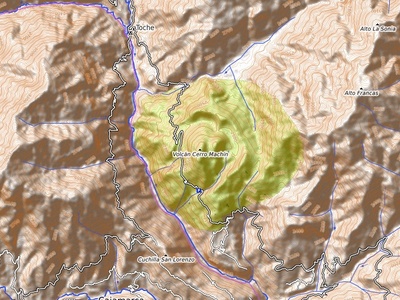
Cerro Machín
Though it hasn’t erupted in 800 years, Machín is considered a major threat due to the potential for a catastrophic explosive eruption that could impact a large and economically important region of Colombia.
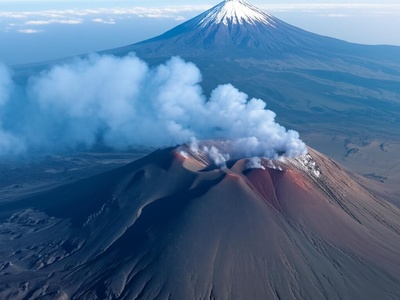
Chiles-Cerro Negro
This volcanic complex straddles the border and has shown significant unrest with intense seismic swarms, indicating the movement of magma beneath the surface and raising concerns about a potential future eruption.
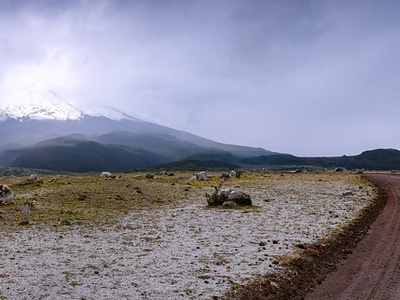
Cotopaxi
One of the world’s highest active volcanoes, Cotopaxi is a picture-perfect, glacier-clad cone. Its beauty belies the immense danger it poses to nearby Quito from potentially catastrophic mudflows.
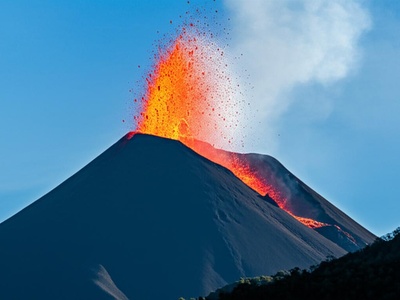
Sangay
Located in a remote national park, Sangay is one of the most active volcanoes on Earth, in a near-constant state of eruption since 1934. Its activity includes lava flows and frequent explosions.
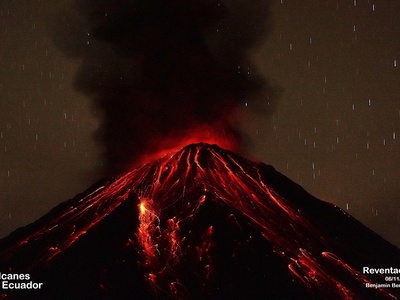
Reventador
Its name means “the Exploder,” a fitting title for this remote but powerful volcano. Reventador is known for its ongoing explosive activity, producing ash clouds, pyroclastic flows, and lava.
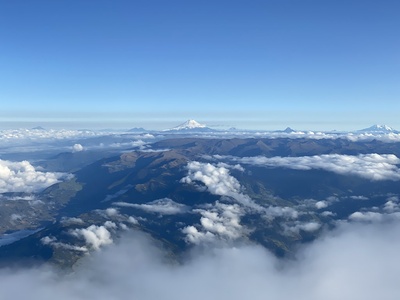
Tungurahua
Known as the “Throat of Fire,” this steep-sided volcano looms over the tourist town of Baños. Its frequent and powerful eruptions from 1999-2016 caused numerous evacuations and widespread ashfall.
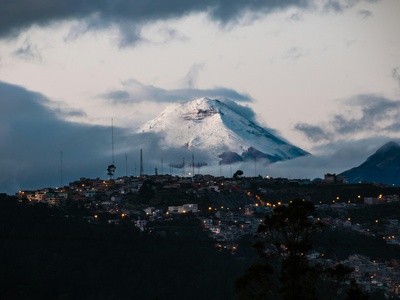
Pichincha
This volcano’s active crater, Guagua Pichincha, sits on the western flank directly overlooking Ecuador’s capital, Quito. A major eruption in 1999 covered the city with a thick layer of ash.
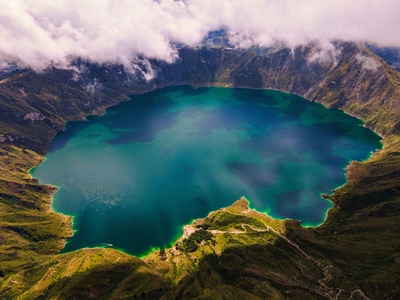
Quilotoa
Famous for its stunning turquoise crater lake, this caldera was formed by a massive explosive eruption about 800 years ago. Today, it is a popular destination for hiking and spectacular views.
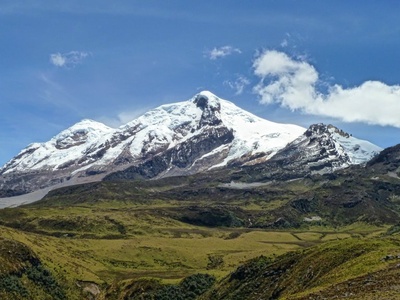
Cayambe
A massive glaciated volcano whose summit is the highest point on Earth’s equator. It is the only place on the equator with a permanent snow cap, making it a unique tropical giant.
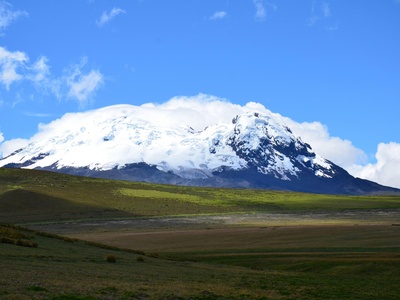
Antisana
This large, double-coned volcano is covered by one of Ecuador’s most significant glaciers, making it a vital source of fresh water for Quito. Its remote location means its eruptions are not well-documented.
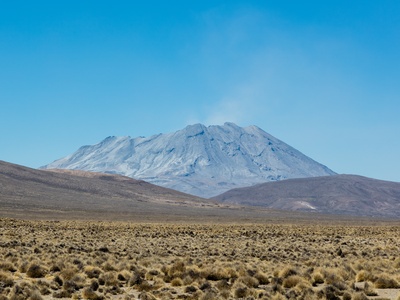
Ubinas
Peru’s most active volcano, Ubinas is known for its frequent explosive eruptions that generate tall ash columns. Its activity often forces the evacuation of farming communities living at its base.
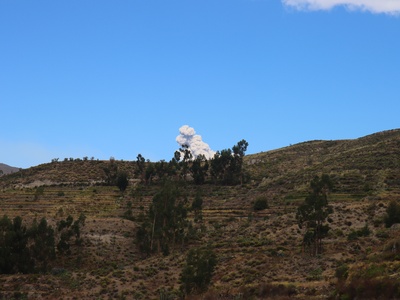
Sabancaya
Meaning “tongue of fire” in Quechua, Sabancaya reawakened in 2016 after nearly two centuries of quiet. It has been in continuous eruption since, emitting ash and gas on a near-daily basis.
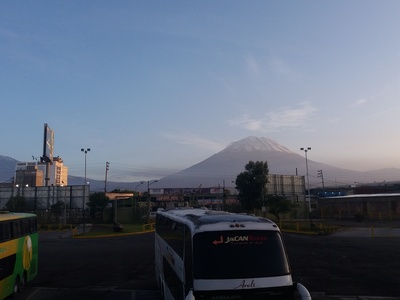
Misti
This iconic, symmetrical stratovolcano stands guard over the city of Arequipa. While its last eruption was small, its potential for a large eruption makes it one of the most dangerous volcanoes in South America.
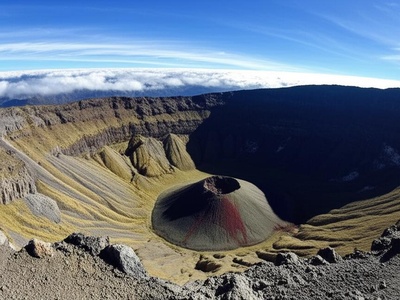
Huaynaputina
Site of the largest volcanic eruption in South America’s recorded history. The 1600 AD eruption was so immense that it affected the global climate, causing cooler summers around the world.
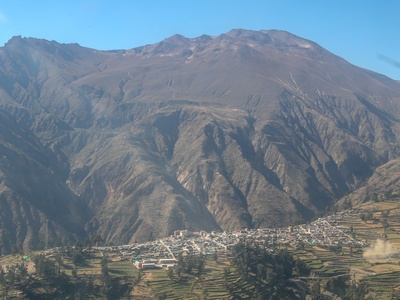
Ticsani
This complex of lava domes poses a significant threat to nearby towns. It has a history of large explosive eruptions, and recent seismic unrest suggests its magma system is still very active.
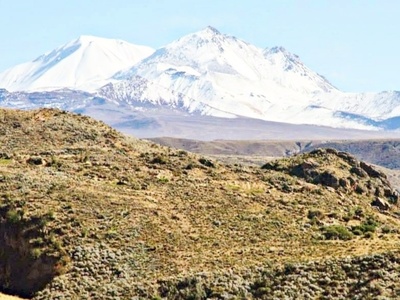
Tutupaca
Located in southern Peru, this volcano experienced a major collapse of its cone during an eruption in the 19th century, which created a massive debris avalanche and pyroclastic flows.
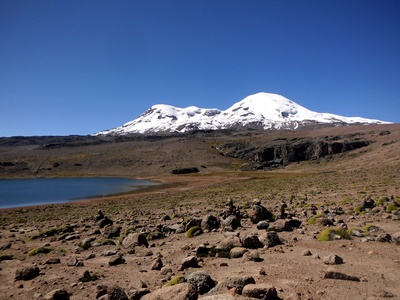
Coropuna
The highest and largest volcano in Peru, Coropuna is a massive ice-covered complex considered sacred in Inca mythology. Although not historically active, it is considered a potentially active system.
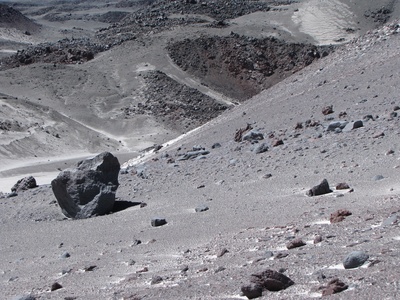
Ojos del Salado
The highest active volcano in the world, this giant sits in the hyper-arid Puna de Atacama. Despite its immense height, its activity is subtle, with only minor gas and ash emissions recorded.
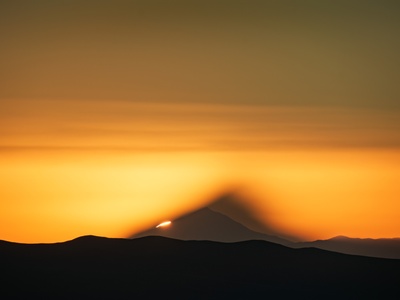
Llullaillaco
The second-highest active volcano globally, Llullaillaco is famed as the discovery site of three perfectly preserved 500-year-old Incan child mummies near its frozen summit, a testament to its sacred status.
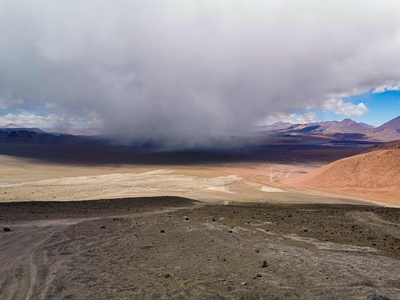
Lascar
As the most active volcano in the northern Chilean Andes, Lascar is known for its frequent, powerful explosive eruptions. Its ash plumes can travel vast distances, sometimes reaching across the continent to Brazil.
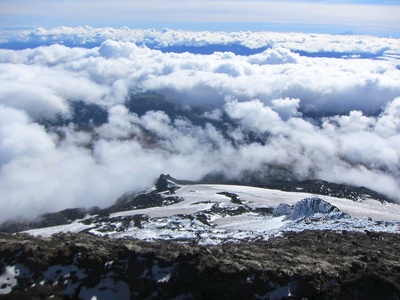
Villarrica
A major tourist destination, Villarrica is one of the few volcanoes worldwide with a persistent, accessible lava lake in its summit crater. Its frequent strombolian eruptions light up the night sky.
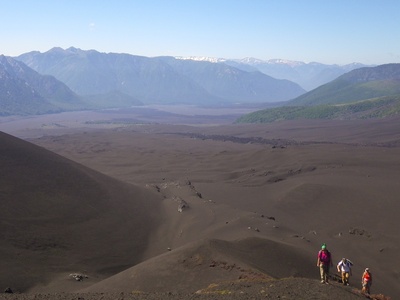
Llaima
One of Chile’s largest and most active volcanoes, Llaima dominates the landscape of Conguillío National Park. It has a long history of frequent and powerful eruptions from its two summits.
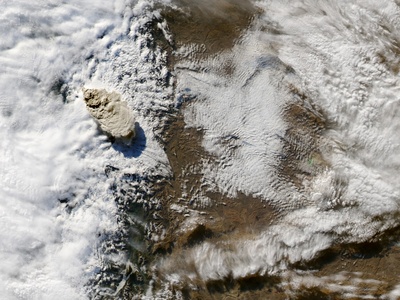
Puyehue-Cordón Caulle
This volcanic complex produced a massive eruption in 2011 that sent an ash cloud around the world, grounding flights across the Southern Hemisphere for weeks and blanketing Patagonia in thick ash.
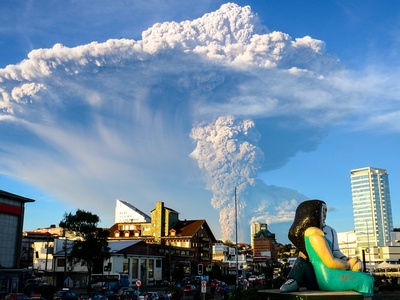
Calbuco
After 42 years of silence, Calbuco erupted spectacularly and without warning in 2015. The powerful blasts sent a column of ash 15 kilometers high, triggering mass evacuations.
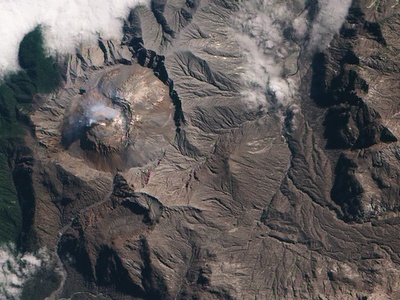
Chaitén
Its unexpected 2008 eruption was scientifically significant for producing rare rhyolitic lava. The eruption buried the nearby town of Chaitén in ash and mud, forcing its permanent relocation.
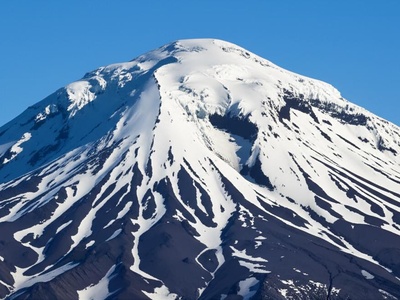
Hudson
Responsible for one of the largest eruptions of the 20th century in 1991, its ash circled the globe. The eruption melted a significant portion of its summit glacier, causing massive mudflows.
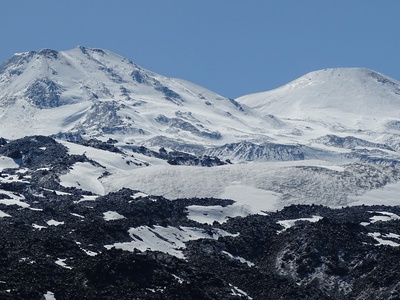
Nevados de Chillán
This is a large complex of multiple volcanic vents rather than a single peak. It has been in a state of continuous eruption since 2016, building a new lava dome and producing frequent explosions.
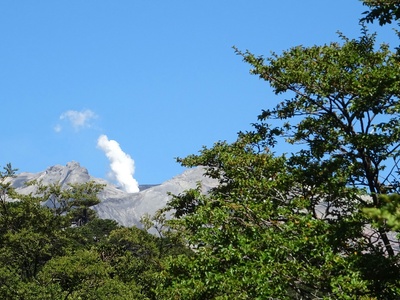
Copahue
Straddling the border, Copahue is notable for its highly acidic crater lake and its frequent, small-to-moderate phreatic and strombolian eruptions, often interacting with snow and ice.
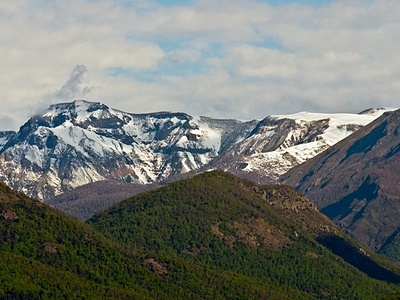
Planchón-Peteroa
A complex of overlapping volcanoes, Peteroa is the historically active center. Its eruptions have included both explosive events and the quiet effusion of long lava flows down its flanks.
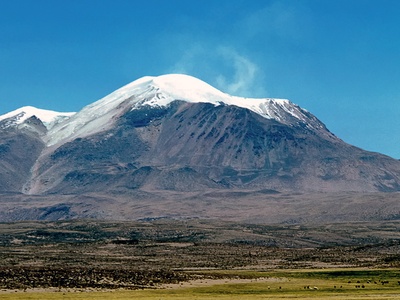
Guallatiri
One of the most active volcanoes in northern Chile, this symmetrical cone is distinguished by its intense and noisy fumarolic activity at the summit, which deposits yellow sulfur and creates a constant vapor plume.
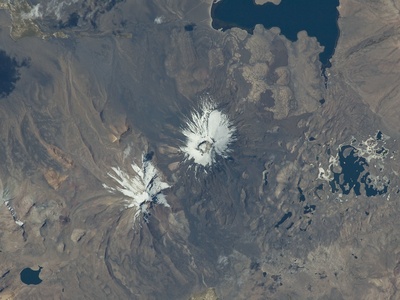
Parinacota
A stunningly symmetrical cone reflected in the waters of Lake Chungará, which was formed when a massive debris avalanche from Parinacota dammed a river about 8,000 years ago.
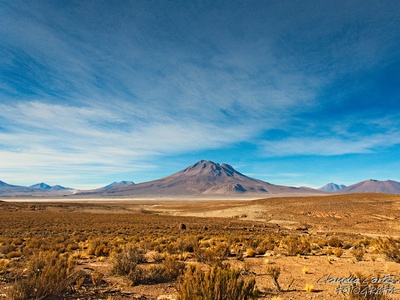
Ollagüe
Located on the arid border, this volcano is known for its persistent and vigorous fumarolic activity. An old road spirals up the mountain to sulfur mines located near the summit.
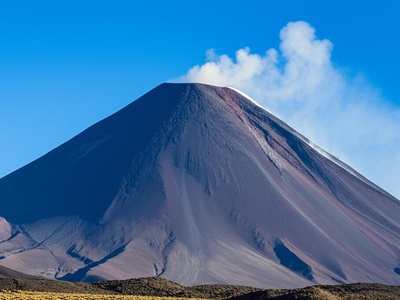
San Pedro
Paired with its older twin, San Pablo, San Pedro is a towering and very steep-sided stratovolcano. It is one of the highest historically active volcanoes in the world.
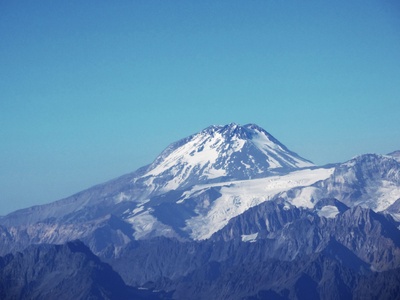
Tupungatito
The active vent of the massive, dormant Tupungato volcano. Tupungatito has a cluster of craters that have been the source of frequent, moderate explosive eruptions throughout the 20th century.
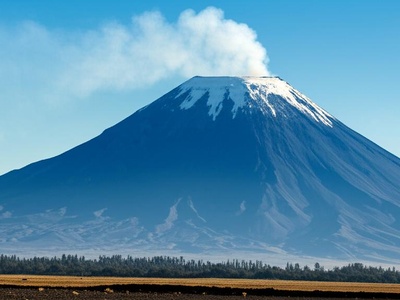
San José
Looming large on the skyline near Chile’s capital, Santiago, this volcano poses a remote but potential threat. It shows persistent signs of life through active fumaroles near its summit.
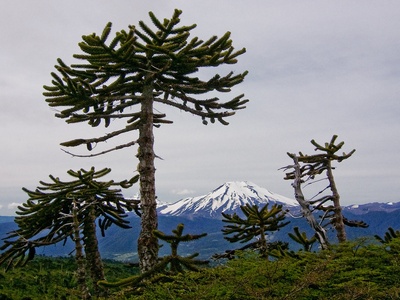
Lonquimay
A 1988 eruption on Lonquimay’s flank created a new cinder cone, “Cráter Navidad,” and a 10-km-long lava flow over a 13-month period, dramatically altering the local landscape.
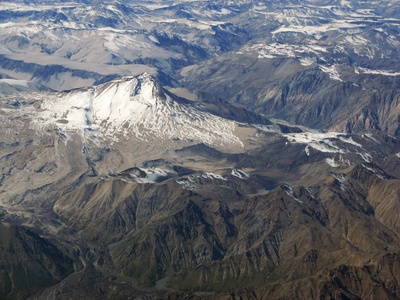
Cerro Azul
While the main cone is dormant, its flank vent, Quizapu, produced one of the largest explosive eruptions of the 20th century in 1932, with ash falling as far away as Buenos Aires.
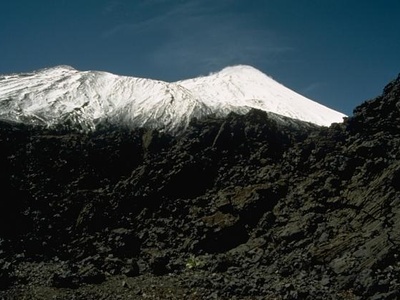
Antuco
Located in Laguna del Laja National Park, this beautifully conical volcano has a recorded history of eruptions dating back to the 18th century, which have produced both lava flows and explosive activity.
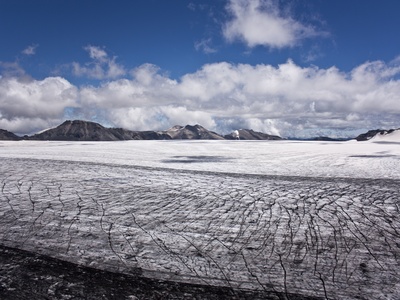
Sollipulli
This volcano is remarkable for its enormous 4-km-wide, ice-filled caldera. The caldera contains a massive glacier nearly 600 meters thick, one of the largest in the Andes outside Patagonia.
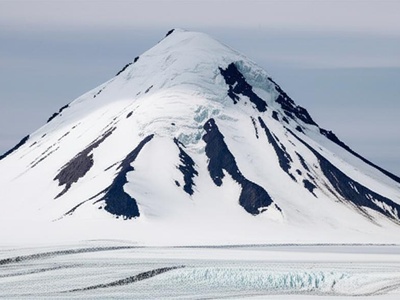
Lautaro
An ice-covered volcano that rises from the middle of the vast Southern Patagonian Ice Field. Its eruptions are difficult to observe, but they leave distinct dark ash layers on the surrounding ice.
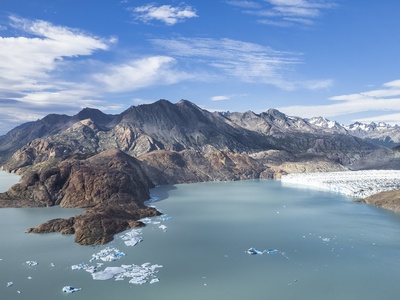
Viedma
A rare subglacial volcano located entirely beneath the massive Viedma Glacier. Its last known eruption in 1988 melted the ice above it, sending ash and mud into the adjacent Lake Viedma.
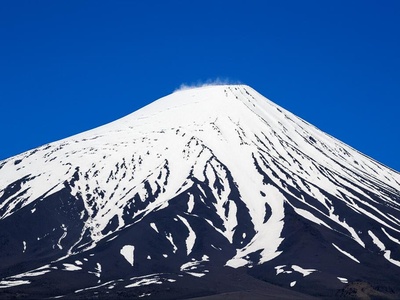
Burney
A remote, ice-capped volcano in southern Patagonia. About 4,100 years ago, it produced one of the largest explosive Holocene eruptions in the entire Southern Andes mountain range.
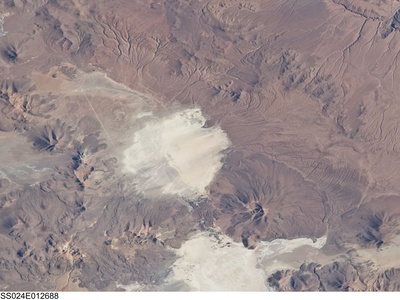
Irruputuncu
This small stratovolcano on the border has two summit craters. The southern crater is very active, with powerful, noisy fumaroles that continuously emit sulfurous gases.
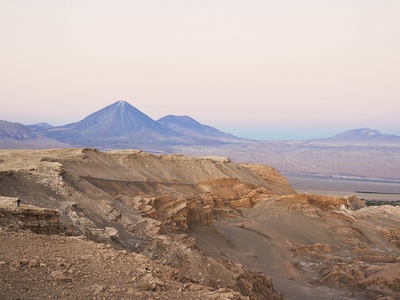
Licancabur
An iconic, perfectly-shaped cone that dominates the view from San Pedro de Atacama. It holds a small, ice-covered lake in its summit crater, which is one of the highest lakes in the world.
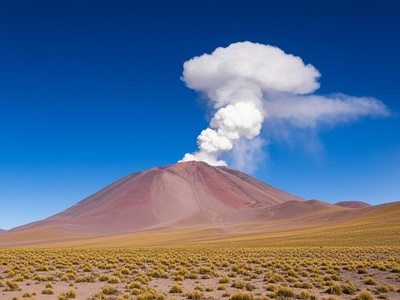
Putana
Often called “Volcán Jorgencal,” Putana is renowned for the near-constant activity of its many fumaroles, which create a huge plume of steam visible from great distances across the Altiplano.
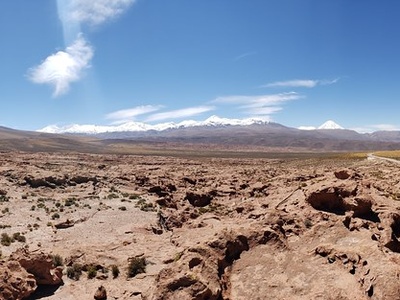
Sairecabur
A large volcanic complex that hosts the 4th highest astronomical observatory in the world near its summit. It contains a well-preserved summit crater and extensive lava flows.
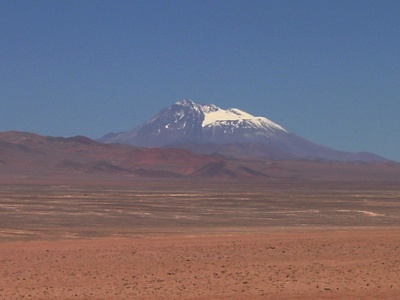
Socompa
This volcano is famous for producing one of the largest and best-preserved debris avalanches on Earth about 7,200 years ago. The collapse deposit covers an enormous 600 square kilometers.
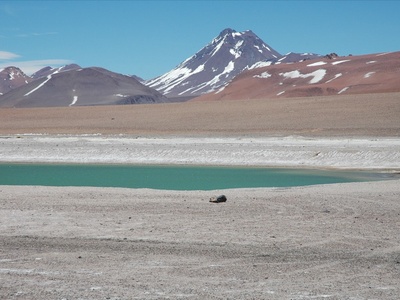
Acamarachi
Also known as Pili, this is an exceptionally steep-sided stratovolcano. Its summit crater contains what is likely the second-highest crater lake in the world, discovered by mountaineers.
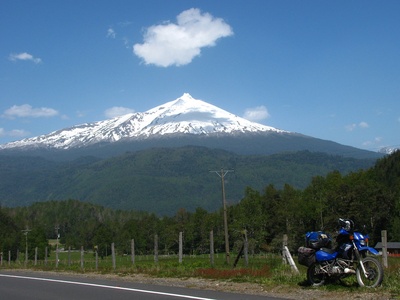
Mocho-Choshuenco
A scenic, glacier-covered volcanic complex formed by two overlapping cones. It is a popular ski resort, with its last confirmed eruption occurring from a flank vent in the 19th century.
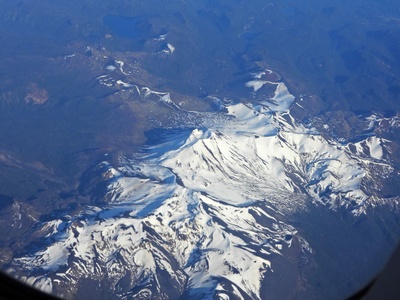
Antillanca-Casablanca
This volcanic group in Puyehue National Park consists of the Casablanca stratovolcano and the Antillanca group of numerous scoria cones, maars, and fissure vents, set amid lush forests.
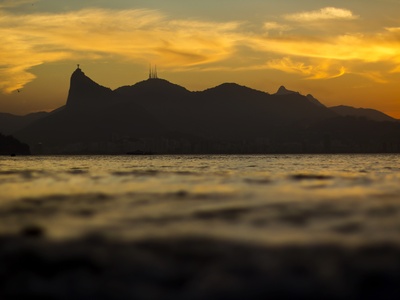
Corcovado
A steep, glacier-covered volcano that towers over the Gulf of Corcovado in Patagonia. Charles Darwin may have witnessed its 1835 eruption from the deck of the HMS Beagle.
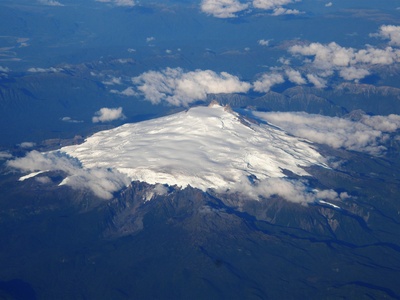
Melimoyu
A remote, ice-capped volcano in northern Patagonia. An eruption about 2,800 years ago caused a large part of the volcano to collapse, sending a debris avalanche into the sea.
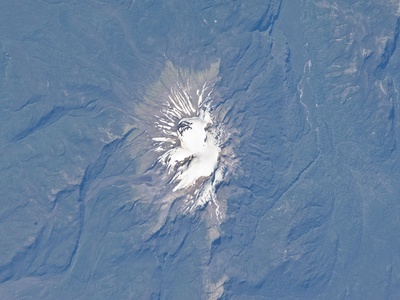
Mentolat
A large, 8-km-wide ice-filled caldera in a remote part of the Aysén Region. Its isolation means its eruptive history is not well known, but it shows evidence of post-glacial activity.
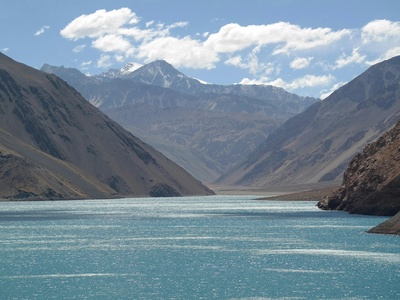
Maipo
This volcano is notable for its large caldera, which was formed by a cataclysmic eruption hundreds of thousands of years ago. The caldera now holds the beautiful Diamante lake.
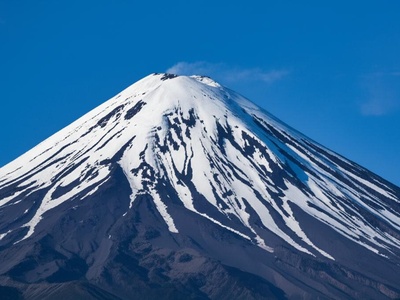
Yate
A steep-sided, glacier-clad volcano in southern Chile. Although its last eruption was thousands of years ago, it is considered potentially active and lies in a very active volcanic region.
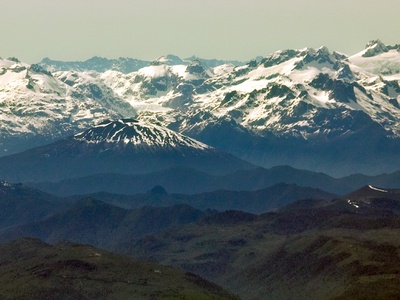
Hornopirén
Meaning “snow oven” in the Mapuche language, this is a beautifully symmetrical, forest-covered stratovolcano in a sparsely populated region of southern Chile.
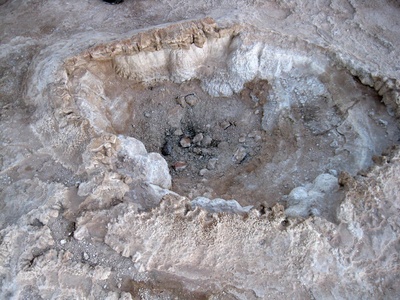
Apagado
Meaning “extinguished” in Spanish, this name is misleading as the volcano is geologically young. Also known as Hualiaque, it is a small, well-preserved stratovolcano south of Hornopirén.
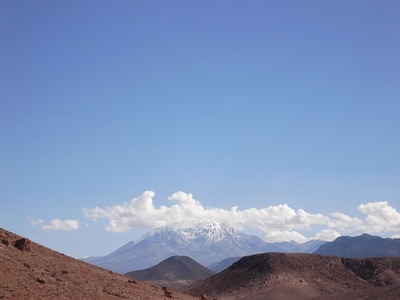
Taapaca
A large volcanic complex located just north of the town of Putre. Its past activity includes the collapse of lava domes and the generation of large pyroclastic flows that surround its base.
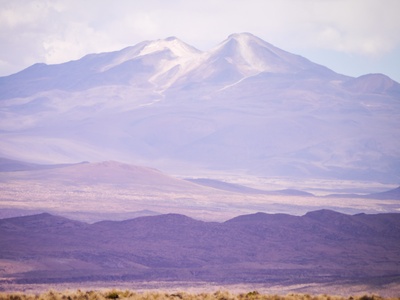
Uturuncu
Although it hasn’t erupted in 250,000 years, Uturuncu is showing remarkable signs of life. The ground around it is inflating at a rapid rate, suggesting a large body of magma is growing beneath it.
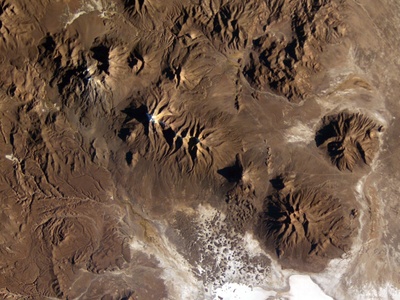
Cabaray
A massive andesitic stratovolcano located in the remote Sajama region of Bolivia. It has well-preserved lava flows on its flanks, indicating that it has been active in the last 10,000 years.
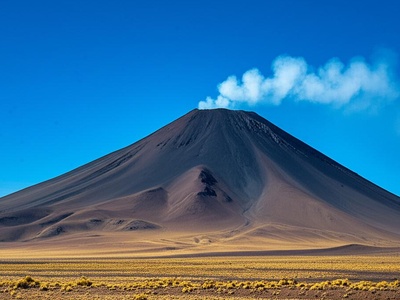
Isluga
A frequently active volcano in northern Chile, often producing small explosive eruptions and lava flows. It is considered sacred by the local Aymara people.
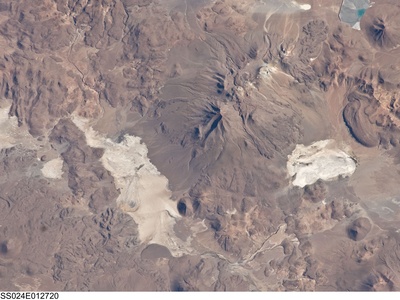
Olca-Paruma
This is a 15-km-long chain of several connected stratovolcanoes on the border. The westernmost cone, Volcán Paruma, has been the source of historical eruptions.
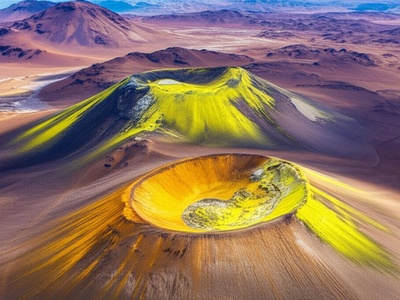
Lastarria
This volcano is known not for large eruptions but for its extensive and powerful fumarole fields, which actively deposit colorful sulfur all over its three summit craters.
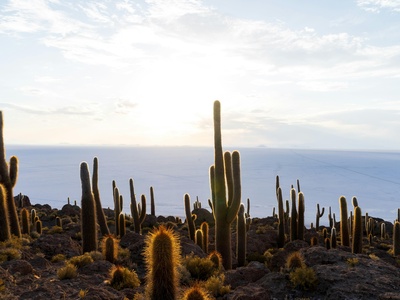
Incahuasi
Its name means “Inca House,” and it is one of the highest volcanoes on Earth. It consists of a large caldera with two stratovolcanoes and has produced extensive andesitic lava flows.
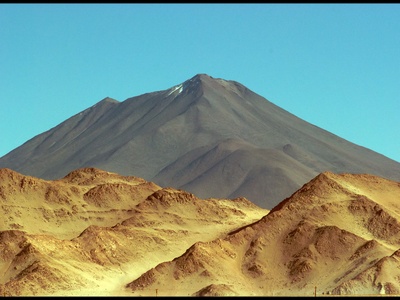
Aracar
A steep-sided conical volcano in northwestern Argentina. In 1993, it produced a small ash cloud that was observed by local residents, confirming its status as an active system.
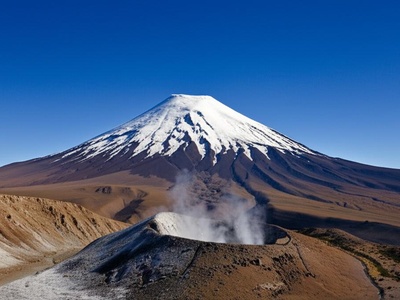
Domuyo
Known as the “Roof of Patagonia,” this is a massive volcanic complex with a large caldera. It is famous for its numerous hot springs and geysers, indicating a powerful geothermal system.
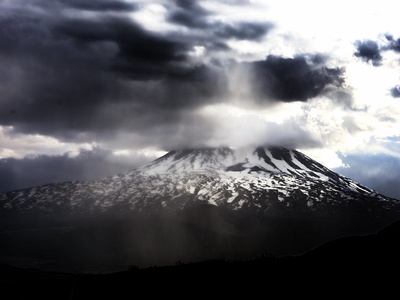
Tromen
A large stratovolcano in the northern part of Argentine Patagonia. It has been one of the most active volcanoes in the region, with historical accounts of eruptions in the 18th and 19th centuries.

Copahue
Straddling the border, Copahue is notable for its highly acidic crater lake and its frequent, small-to-moderate phreatic and strombolian eruptions, often interacting with snow and ice.
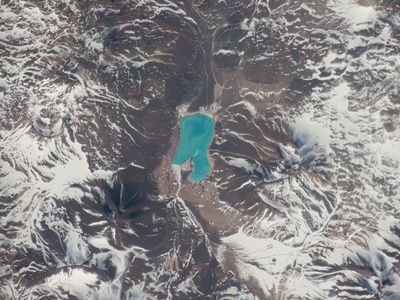
Falso Azufre
This large volcanic complex on the border has numerous craters and vents. It produced one of the region’s largest Holocene lava flows, which extends over 8 kilometers from its source.
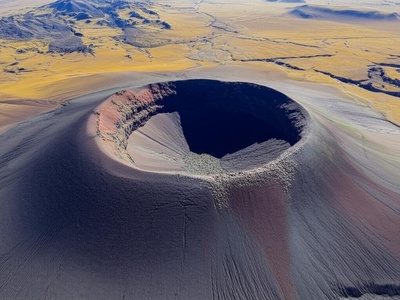
Pocoques
A young stratovolcano in Bolivia with a well-preserved summit crater. Its slopes are covered by pristine-looking lava flows, indicating eruptions within the last 10,000 years.
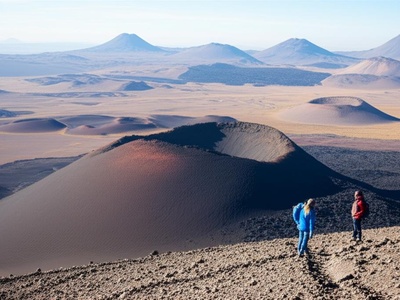
Quetena
Part of a volcanic field in southern Bolivia, this peak shows evidence of geologically recent activity, including well-preserved lava flows that suggest it is a potentially active volcano.

